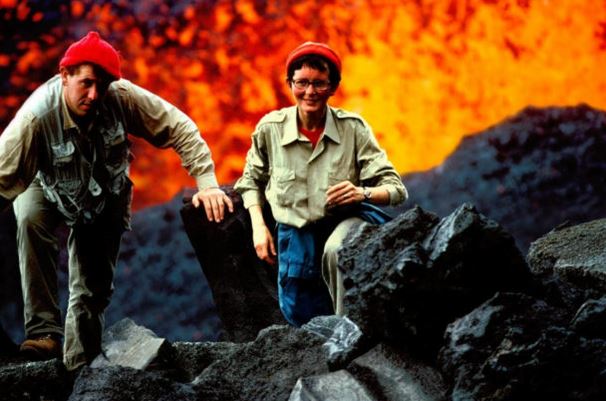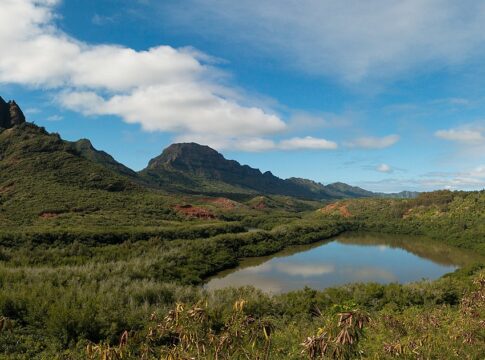By Jana Monji, AsAmNews Arts & Culture Reporter
National Geographic’s Fire of Love and Werner Herzog’s The Fire Within: A Requiem for Katia and Maurice Krafft” both focus on the 1991 Mount Unzen (雲仙岳, Unzen-dake) eruption in Japan, yet you won’t see many Asian faces in either.
The two French volcanologist, Katia and Maurice Krafft died in Japan along with their colleague and interpreter, US citizen Harry Glicken, but these three volcanologists were among the 43 who died.
Neither documentary consults with the Japanese who were in Japan covering the Unzen eruption even though Glicken was working in Tokyo. According to A New Japan Volcanological Database, there are 111 active volcanoes in Japan. Glicken contributed to papers written with Japanese scientists, one published after his death. Harry Glicken’s body was identified by his colleagues from the Tokyo Metropolitan University.
LATEST STORIES
Seeing both documentaries broadens one’s view of the Kraffts, but it doesn’t provide the Japanese view of the incident.
In the “Fire of Love,” Japan seems like a backdrop for a love story.
Peabody-winning director Sara Dosa’s Fire of Love is about the Kraffts as a couple and we learn how they possibly met and how they worked together. The two come off as determined, but the husband Maurice seems to have tempted fate with his acid boat trip and dreams of kayaking down a lava flow. The documentary ends by showing that the work of the Kraffts did help save lives in the Philippines the very same year as their deaths.
In The Fire Within, Herzog, indicates that Katia didn’t want to be in Japan. She wanted to go to the Philippines. Herzog’s The Fire Within looks at the Kraffts as scientists crafting themselves into media stars. Herzog provides a context for their deaths because we clearly see Japanese journalists covering both Unzen and the Kraffts.
Herzog previously followed volcanologist Clive Oppenheimer for his 2016 documentary Into the Inferno. It was during the production of this documentary that he learned about the Kraffts.
The trailer includes testimony from eyewitnesses as well as reenactments.
The documentary on the New Zealand eruption, The Volcano: Rescue from Whakaari, is also troubling. The Netflix documentary retreads things you can find elsewhere. The focus is, with the exception of a Māori tour guide Tipene Maangi, on White people from New Zealand, the US and Australia. Just like the previous two documentaries, this film is White-centric.
Yet there were non-white US citizens among the dead: Mayuri (Mary) Singh and Pratap (Paul) Singh. The Singhs were residents of Atlanta. They both died in the hospital, but they were survived by three children and the wife’s mother.
According to The Guardian, one of the initial survivors was an unnamed Malaysian man who was a permanent resident of Australia. Two long-term Australian residents from China also survived: 26-year-old Annie Yongan Lu and her 56-year-old mother, Alice Xioman Zhang.
The Singhs were active within the Atlanta community and the nephew flew over to be at their side. The nephew, Bhupender “Vick” Singh made a statement. The grandmother of the Māori tour guide Tipene Maangi was interviewed, but not the mother of the Asian Indian American Mayumi Singh. Two US citizens Matt and Lauren Urey of Chesterfield, Virginia, were interviewed.
On the one-year anniversary of the White Island Eruption, Lu wrote an entry on her blog: White Island Eruption: Life From Then to A Year On.
Director Rory Kennedy had previously directed the 2014 Oscar-nominated Last Days of Vietnam for PBS so she has displayed a sensitivity toward people of Asian descent.
The exclusion of Asian faces from all three documentaries seems to indicate a wider problem. For the documentaries Love of Fire and Fire Within we should ask: Are all the experts on the Unzen eruption White? To have victims who are non-white not to have a voice in a documentary is troubling especially when one sees that both are willing to provide written public statements.
Fire of Love premiered at the Sundance Film Festival and also screened at South by Southwest and DOC NYC. It has been streaming since November 2022. The film won Best Documentary from the Chicago Film Critics Association. At the Sundance Film Festival, it won the Jonathan Oppenheim Editing Award.
The Fire Within: A Requiem for Katia and Maurice Krafft screened at Telluride Film Festival and DOC NYC. It won DOC LA Award for Best Producer and Best Film.
The Volcano: Rescue from Whakaari began streaming on 16 December 2022 on Netflix.
For my full review of all three films, visit my blog Age of the Geek.
AsAmNews is published by the non-profit, Asian American Media Inc. Follow us on Facebook, X, Instagram, TikTok and YouTube. Please consider making a tax-deductible donation to support our efforts to produce diverse content about the AAPI communities. We are supported in part by funding provided by the State of California, administered by the California State Library in partnership with the California Department of Social Services and the California Commission on Asian and Pacific Islander American Affairs as part of the Stop the Hate program. To report a hate incident or hate crime and get support, go to CA vs Hate.








